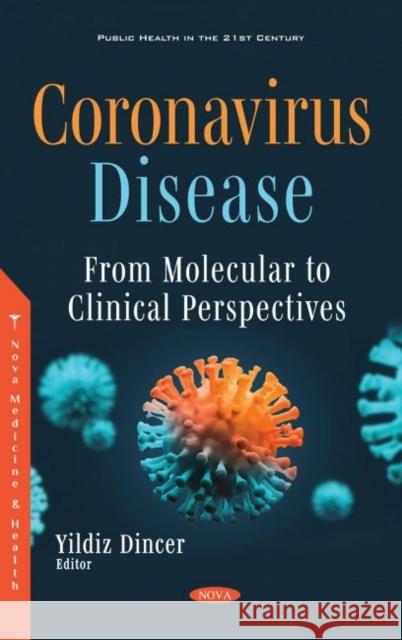Coronavirus Disease: From Molecular to Clinical Perspectives » książka
Coronavirus Disease: From Molecular to Clinical Perspectives
ISBN-13: 9781536192964
The world is experiencing an unprecedented challenge due to coronavirus disease (COVID-19) pandemic.In December 2019, a novel severe acute respiratory syndrome coronavirus 2 (SARS-CoV-2) was identified as the cause of a cluster of pneumonia cases in Wuhan, a city in the Hubei province of China. It rapidly spread, resulting in an outbreak of COVID-19. Although the majority of the infected individuals exhibit mild to moderate respiratory illness and recover without requiring special treatment, older people and those with underlying medical problems like cardiovascular disease, diabetes, chronic respiratory disease, and cancer may rapidly progress to acute respiratory distress syndrome, septic shock, coagulation disorders, multi-organ failure, and death. The course of COVID-19 is usually mild in children. However, in rare cases, children can be severely affected, and clinical manifestations may differ from adults. Some children present the multisystem inflammatory syndrome that is similar to incomplete Kawasaki disease or toxic shock syndrome. There is no specific treatment and vaccine for COVID-19. Due to the high infectivity rate of COVID-19, the unexpected and rapid influx of large numbers of patients, especially patients who need intensive care, have caused great pressure on the health care systems worldwide. The worldwide spread of COVID-19 caused fear, anxiety, depression, panic attacks, and a general decrease in overall wellbeing in the population. Healthcare professionals who occupy the front line during pandemics are at increased risk concerning their physical and mental health. The outbreak of COVID-19 negatively affected all aspects of life including education, trade, and tourism. Our knowledge of this novel virus is limited. However, many ongoing clinical trials are evaluating potential treatments and vaccines. A better understandingof thepathogenesisofCOVID-19will provide important insight into its management and reduce the mortality rate. Based on the latest global scientific data and clinical experiences of the authors, this book gives the readers an overview of COVID-19 pathogenesis and transmission routes, current diagnostic and treatment strategies, the clinical course of the disease in children and elderly patients, the genetic background of differences in the incidence of new SARS-CoV-2 infection, the impact of the COVID-19 pandemic on patients with chronic diseases such as diabetes, cancer, cardiovascular diseases, chronic respiratory diseases, antioxidant therapy to limit tissue damage, molecular approaches in COVID-19 treatment, and vaccine studies.











